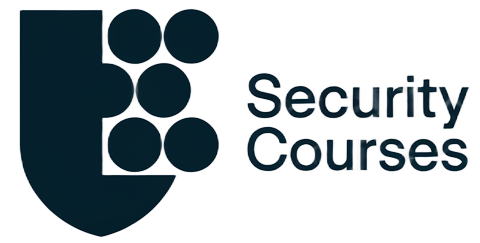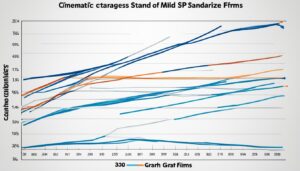Welcome to our beginner’s guide on the NIST SP800-37 cybersecurity framework. As an authority in the field of risk management and cybersecurity, we understand the importance of effectively managing and reducing cybersecurity risks, especially for small and medium-sized enterprises (SMEs). In this guide, we will simplify the SP800-37 framework and provide actionable insights specifically tailored for SMEs. Whether you are new to the framework or looking to enhance your cybersecurity practices, this guide will equip you with the knowledge and resources to effectively implement the SP800-37 framework and strengthen your organization’s security posture.
Key insights and expertise:
– SP800-37 framework is designed to help organizations, including SMEs, better manage and reduce cybersecurity risk.
– The framework provides guidelines, standards, and practices to foster communication and collaboration among stakeholders.
– The SP800-37 framework is applicable to organizations in both the private and public sectors, including federal agencies.
– Organizations can get started with the framework by visiting the NIST Framework website and accessing the available resources.
– The framework consists of five Functions: Identify, Protect, Detect, Respond, and Recover, along with Categories and Subcategories.
– Risk management is a crucial component of the framework, and risk assessment and response play a vital role in the risk management process.
– RMF 2.0 (SP 800-37 Rev. 2) is a system life cycle approach for security and privacy, aligning with other cybersecurity frameworks.
– Privacy and supply chain risk management are integrated into RMF 2.0, following the requirements of OMB Circular A-130.
– The Prepare Step in RMF 2.0 involves tasks at both the organization and system levels, addressing risk assessment and security requirements.
– RMF 2.0 offers various authorization options and improved tasks to enhance the overall authorization process.
– SP 800-53 Revision 5 provides an updated set of security and privacy controls for information systems and organizations.
Getting Started with the Framework
Organizations can begin their journey with the NIST SP800-37 Framework by visiting the NIST Framework website, a valuable platform that provides a wide range of resources. This website serves as a comprehensive hub for organizations seeking to enhance their cybersecurity risk management practices.
Framework Quick Start Guide:
One of the essential resources available on the NIST Framework website is the Framework Quick Start Guide. This guide offers clear direction and guidance for organizations looking to improve their cybersecurity risk management strategies. It provides a concise overview of the framework’s key components and how to navigate its implementation.
Resource Repository:
The website’s Resource Repository is a goldmine of approaches, methodologies, implementation guides, case studies, and document templates that organizations can leverage. These resources can be customized to suit an organization’s unique risks, situations, and needs, making the implementation of the framework more tailored and effective.
To give you an idea of the vast array of resources available, here is a sample table showcasing some of the resources in the NIST Framework Resource Repository:
| Resource | Description |
|---|---|
| Best Practices Guide | A comprehensive guide that outlines industry best practices for implementing the framework at different organizational levels. |
| Case Study: Industry XYZ | An in-depth exploration of how an organization in a particular industry implemented the framework and the benefits derived from it. |
| Implementation Template: Risk Assessment | A ready-to-use template that guides organizations through the process of conducting a thorough risk assessment. |
| Implementation Guide: Small Businesses | A step-by-step guide specifically designed to support small businesses in implementing the framework effectively. |
These resources, among many others, provide organizations with valuable insights, practical guidance, and real-world examples to facilitate their adoption and implementation of the framework.
By exploring the NIST Framework website and utilizing the available resources, organizations can enhance their understanding of the framework and kickstart their cybersecurity risk management journey on the right foot.
Framework Applicability
The NIST SP800-37 Framework is a versatile tool that extends beyond critical infrastructure companies. While specifically designed for such organizations, it is applicable to both the private and public sectors, including federal agencies. Its adaptability allows it to enhance cybersecurity programs and support various organizations in improving their cybersecurity posture.
By implementing the NIST SP800-37 Framework, critical infrastructure companies, along with other organizations, can benefit in several ways:
- Raising Awareness: The Framework helps organizations understand the importance of cybersecurity and the potential risks they face. By providing guidance and best practices, it increases awareness and promotes a proactive approach to cybersecurity.
- Improving Communication: The Framework facilitates effective communication between stakeholders by establishing common language and understanding. Through a shared vocabulary and framework, organizations can better collaborate and address cybersecurity risks collectively.
- Assessing Cybersecurity Posture: The Framework enables organizations to evaluate their current cybersecurity posture accurately. By conducting assessments based on the Framework’s guidelines, organizations can identify strengths, weaknesses, and areas for improvement in their cybersecurity programs.
The Framework’s applicability to various industries and sectors makes it a valuable resource for organizations aiming to enhance their cybersecurity capabilities and protect their critical assets.
Implementing the NIST SP800-37 Framework can help organizations, including critical infrastructure companies, establish a solid foundation for their cybersecurity programs. By leveraging its guidelines and practices, organizations can proactively address cybersecurity risks and safeguard their digital assets.
Framework Components
In order to understand the NIST SP800-37 Framework, it is essential to grasp its key components and how they work together to improve cybersecurity. The Framework Core serves as the foundation, encompassing a set of cybersecurity activities, desired outcomes, and references that are applicable across critical infrastructure sectors. This ensures consistency and standardization in addressing cybersecurity risks.
The Framework Core is composed of five Functions:
- Identify: Understand the organization’s cybersecurity risks, assets, and vulnerabilities.
- Protect: Develop and implement safeguards to minimize cybersecurity threats.
- Detect: Establish mechanisms to identify cybersecurity events in a timely manner.
- Respond: Develop response strategies to effectively mitigate and address cybersecurity incidents.
- Recover: Establish plans and procedures for restoring operations in the aftermath of a cybersecurity event.
Each Function within the Framework Core is further broken down into Categories and Subcategories, which provide specific objectives and actions for organizations to follow. These Categories and Subcategories are matched with informative references, such as standards, guidelines, and best practices, that can assist organizations in achieving the desired cybersecurity outcomes.
Organizations can tailor the Framework to their specific needs and objectives through Framework Profiles. A Framework Profile represents the combination of Categories and Subcategories selected by an organization to achieve its cybersecurity outcomes. This customization allows organizations to focus on their unique cybersecurity priorities while aligning with the Framework’s overarching goals.
Implementation Tiers provide a context for understanding how organizations implement the Framework. The Tiers range from Partial (Tier 1) to Adaptive (Tier 4), with each tier representing a higher level of cybersecurity risk management maturity. This tiered approach allows organizations to assess their current cybersecurity posture and implement appropriate measures to advance their capabilities.
By incorporating these components, the NIST SP800-37 Framework provides organizations with a comprehensive approach to cybersecurity risk management, guiding them towards enhanced protection and resilience in today’s ever-evolving threat landscape.
Risk Management in SP800-39
In the realm of cybersecurity, risk management plays a critical role in ensuring the protection of sensitive information and maintaining the overall security posture of an organization. The NIST SP800-39 publication is dedicated to providing guidance on security risk management, outlining a systematic approach for identifying, assessing, and mitigating security risks.
Three Levels of Risk Management
The SP800-39 publication breaks down risk management into three distinct levels:
- Organization Level: This level focuses on risk framing, which involves establishing a governance structure that aligns with applicable laws, regulations, and policies. By defining accountability, authority, and responsibility, organizations can effectively manage and oversee security risk management efforts at the highest level.
- Mission/Business Process Level: At this level, organizations define their mission and business processes, prioritize them, and identify the types and flows of information that support those processes. Understanding the criticality of each process allows organizations to identify potential risks and develop appropriate risk mitigation strategies.
- Information System Level: The information system level addresses the specific security considerations pertaining to individual information systems. It involves categorizing information systems based on their potential impact, allocating appropriate security controls, selecting and implementing those controls, conducting ongoing assessments, and monitoring the effectiveness of the security measures implemented.
To illustrate this breakdown, let’s consider an example of a financial institution:
| Level | Action |
|---|---|
| Organization Level | Risk framing – Establishing a governance structure compliant with financial regulations. |
| Mission/Business Process Level | Defining critical processes – Identifying banking transactions, loan approvals, and customer onboarding as critical processes. |
| Prioritizing processes – Prioritizing banking transactions as the most critical process. | |
| Identifying information flows – Identifying the exchange of customer financial data as a key information flow. | |
| Information System Level | Categorizing information systems – Categorizing core banking systems as high-impact systems. |
| Allocating security controls – Implementing strong authentication mechanisms, encryption, and access controls for core banking systems. | |
| Selecting controls – Choosing intrusion detection systems and firewall solutions to protect against network-based attacks. | |
| Implementing controls – Deploying firewall and intrusion detection systems across the network. | |
| Assessing and monitoring – Conducting periodic vulnerability assessments and system monitoring to detect any security weaknesses or breaches. |
The holistic approach of SP800-39 ensures that risk management efforts are comprehensive and cover all levels within an organization. By addressing risk management at each level, organizations can develop and implement effective security measures to protect their critical assets and information.
Risk Assessment and Response

Effective risk management begins with thorough risk assessment. This critical step involves identifying potential threats and assessing vulnerabilities to determine the level of risk faced by an organization.
Once risks have been identified, organizations must develop a risk response plan. This involves evaluating the identified risks and implementing appropriate actions to address them. The goal is to manage and reduce risk through strategies such as:
- Risk mitigation: Taking proactive measures to minimize the impact of identified risks.
- Risk sharing: Collaborating with partners or stakeholders to distribute and collectively manage risks.
- Risk transfer: Transferring the responsibility of managing risks to a third party, such as an insurance provider.
Effective risk response requires comprehensive risk identification. This involves examining all areas of the organization, from operations to information systems, to ensure that potential risks are identified and addressed.
Furthermore, risk response should align with an organization’s risk tolerance and business requirements. Some risks may be accepted, especially if their likelihood is low or their potential impact is manageable. Other risks may be avoided, especially if they pose significant threats to the organization.
Continual risk monitoring is essential for effective risk management. Risks are dynamic and can change over time due to various factors, such as new threats emerging or changes in the organization’s operations. Regularly monitoring and evaluating risks allows organizations to adapt their risk response strategies and ensure that risk management remains effective.
In summary, risk assessment is the foundation of effective risk management. It involves identifying and evaluating risks, while risk response focuses on implementing appropriate strategies to manage and reduce these risks. By continuously monitoring risks, organizations can adapt and maintain effective risk management practices.
RMF 2.0 and SP 800-37 Rev. 2
In the realm of cybersecurity, organizations must adopt a systematic approach to managing risk and protecting sensitive information. This is where RMF 2.0, also known as SP 800-37 Revision 2, comes into play. Serving as a comprehensive system life cycle approach for security and privacy, RMF 2.0 offers a robust framework that organizations can leverage to bolster their risk management efforts.
One of the key aspects of RMF 2.0 is the delineation of roles and responsibilities within the risk management process. With various stakeholders involved, such as the Senior Accountable Official for Risk Management, the Senior Agency Official for Privacy, the Authorizing Official, and the System Owner, organizations can establish a clear structure for accountability and decision-making.
Prior to its release, the publication of RMF 2.0 underwent an extensive public comment process and thorough review. This ensured that it received input from a diverse range of experts and stakeholders, resulting in a comprehensive and well-rounded framework.
RMF 2.0 aligns seamlessly with other established cybersecurity frameworks, such as the Cybersecurity Framework (CSF), providing organizations with a holistic approach to risk management. By integrating with existing frameworks, organizations can leverage synergies and streamline their risk management practices.
Ultimately, RMF 2.0 empowers organizations to proactively identify and mitigate risks, safeguarding their critical assets and maintaining the confidentiality, integrity, and availability of their information. By adopting this robust framework, organizations can navigate the complex landscape of cybersecurity with confidence and resilience.
Integration of Privacy and SCRM in RMF 2.0
In the RMF 2.0 framework, privacy is seamlessly integrated, aligning with the requirements outlined in OMB Circular A-130. Throughout the entire RMF process, privacy considerations are thoroughly addressed, offering organizations specific tasks and guidance to ensure privacy protection. Notably, the integration of privacy extends further to include supply chain risk management (SCRM) within the framework.
Within the RMF tasks, both privacy and SCRM have dedicated inputs, outputs, roles, and references. This comprehensive integration of privacy and SCRM emphasizes the importance of safeguarding sensitive information and mitigating risks associated with the supply chain.
Let’s take a closer look at the privacy-specific inputs, outputs, roles, and references within the RMF tasks:
| Privacy-Specific Inputs | Privacy-Specific Outputs | Privacy-Specific Roles | Privacy-Specific References |
|---|---|---|---|
|
|
|
|
Note: The image above visually represents the integration of privacy and SCRM in RMF 2.0, showcasing the cohesive relationship between the two concepts.
Prepare Step in RMF 2.0
In the Risk Management Framework (RMF) 2.0, the Prepare Step plays a crucial role in ensuring effective risk management at both the organization and system levels. This step involves a series of tasks that are essential for establishing a robust cybersecurity posture and addressing security and privacy requirements.
Tasks at the Organization Level
At the organization level, the Prepare Step involves the following tasks:
- Identifying and assigning people to RM roles: This task ensures that the necessary personnel are designated to carry out the risk management activities within the organization.
- Establishing an organization-wide RM strategy: It involves developing a comprehensive strategy that outlines the goals, objectives, and approach for managing cybersecurity risks across the organization.
- Assessing organization-wide risk: This task involves conducting a thorough risk assessment to identify and evaluate potential risks that may affect the organization’s operations and assets.
- Defining security and privacy requirements: It includes determining the specific security and privacy requirements that need to be met at the organization level.
By completing these tasks, organizations can ensure that risk management is integrated into their overall operations and that they have a clear understanding of their security and privacy needs.
Tasks at the System Level
At the system level, the Prepare Step focuses on tasks that are specific to individual missions/business functions and their associated systems:
- Identifying missions/business functions: This task involves identifying the primary missions or business functions that the system supports.
- Identifying stakeholders: It includes identifying the key stakeholders who will be involved in the risk management process for the system.
- Identifying assets: This task involves identifying the assets, including information resources and physical devices, that are associated with the system.
- Determining security and privacy requirements: It includes specifying the security and privacy requirements that must be met by the system and its environment.
By completing these tasks, organizations can ensure that the risk management process is tailored to the specific needs and characteristics of the individual system and its associated missions/business functions.
Prepare Step Tasks
| Organization Level | System Level |
|---|---|
| Identifying and assigning people to RM roles | Identifying missions/business functions |
| Establishing an organization-wide RM strategy | Identifying stakeholders |
| Assessing organization-wide risk | Identifying assets |
| Defining security and privacy requirements | Determining security and privacy requirements |
The table provides a clear overview of the tasks involved in the Prepare Step at both the organization and system levels, emphasizing the importance of addressing risk assessment, security, and privacy requirements at each stage of the RMF process.
Authorization Options and Improved Tasks in RMF 2.0

In RMF 2.0, organizations have the flexibility to choose from a range of authorization options that align with their specific needs. These options include:
- Authorization to Operate
- System Authorization
- Type Authorization
- Facility Authorization
- Common Control Authorization
- Authorization to Use
These authorization options allow organizations to tailor the process according to their unique requirements, ensuring a streamlined and effective approach to cybersecurity risk management.
A significant enhancement in RMF 2.0 is the improved tasks that contribute to a more efficient authorization process. These enhancements focus on various aspects, including:
- Control implementation
- Baseline configuration
- Risk analysis
- Risk response
- Reporting authorization decisions
By addressing these key areas, the revised tasks in RMF 2.0 empower organizations to strengthen their security posture and enhance their ability to identify, assess, and manage risks effectively.
Implementing a robust authorization process is vital to ensure the confidentiality, integrity, and availability of sensitive information and critical assets. The improved tasks in RMF 2.0 enable organizations to achieve and maintain a strong cybersecurity posture, protecting their systems and data from evolving threats.
| Authorization Option | Description |
|---|---|
| Authorization to Operate | Authorizing a system to operate within specified parameters. |
| System Authorization | Authorizing a specific system, including its hardware, software, and supporting infrastructure. |
| Type Authorization | Authorizing a particular type or class of system to be used across multiple organizations. |
| Facility Authorization | Authorizing a facility or physical location where systems are housed. |
| Common Control Authorization | Authorizing the use of common controls that are shared across multiple systems. |
| Authorization to Use | Authorizing the use of a system or application by authorized individuals or user groups. |
SP 800-53 Revision 5
SP 800-53 Revision 5 is a crucial publication that offers an updated and comprehensive framework of security and privacy controls for information systems and organizations. It provides organizations with a robust set of controls that address various cybersecurity and privacy risks, helping them establish effective security measures and protect their valuable information systems.
With its emphasis on security controls, SP 800-53 Revision 5 equips organizations with the necessary tools to identify potential vulnerabilities and implement appropriate safeguards. By implementing these controls, organizations can enhance their cybersecurity posture and mitigate risks effectively.
Furthermore, SP 800-53 Revision 5 also incorporates privacy controls, recognizing the importance of safeguarding personal and sensitive information. These privacy controls enable organizations to establish robust privacy practices, ensuring the protection of individuals’ privacy rights and compliance with relevant privacy regulations.







